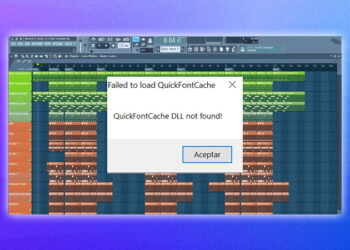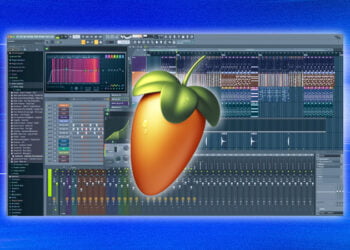Recording a track in FL Studio can be an intimidating prospect for new producers, especially when it comes to the infamous ‘hearing yourself’ problem.
Many producers struggle to get the sound they want due to a lack of knowledge about technical matters such as signal routing, sound card setup, and soundproofing.
In this blog post, we will discuss how to avoid hearing yourself during recording sessions in FL Studio.
We will focus on the importance of proper sound card setup, signal routing, and soundproofing techniques to achieve the desired sound.
Additionally, we will cover how to troubleshoot common audio issues and what to do if you do encounter feedback or static.
With these tips and tricks, you will soon be able to confidently record and mix in FL Studio without hearing yourself.
Lower the monitor volume
One of the first steps to take if you want to not hear yourself in FL Studio is to lower the monitor volume.
This setting can be found in the Mixer window.
Once you click on the monitor volume slider, you will be able to adjust it until you no longer hear yourself in the mix.
Adjusting the monitor volume can also help to avoid feedback from the speakers.
Additionally, it’s a good idea to make sure that the master output is not too high, as that can cause a lot of noise.
Check the “Disable Playback” option
If you’re using FL Studio, one of the most annoying things that can happen is to hear yourself in the playback.
Thankfully, it’s a relatively easy fix.
All you have to do is open up the Channel Settings menu and look for the “Disable Playback” option.
Checking this box will stop any sound coming out of the track, so you won’t hear yourself in the mix.
This is especially useful when recording vocals or other instruments in real-time.
Once you’ve finished recording, you can always uncheck the “Disable Playback” option to hear what you’ve recorded.
Configure your audio settings
The third step in avoiding hearing yourself in FL Studio is to configure your audio settings.
This is an important step as it ensures that your audio is routed to the correct audio output.
To do this, click the “Options” menu, then “Audio Settings”.
Under the “Device” tab, you should select your audio output device from the drop-down menu.
You can also configure your audio input device in this section.
Once you have selected the correct audio output device, click the “OK” button to save your settings.
Reduce the master volume
The fourth step to not hearing yourself in FL Studio is to reduce the master volume.
You can do this by opening the Mixer tab and then clicking on the Master Channel, which is the first channel from the left.
In the Master Channel, you can adjust the Volume knob to reduce the overall volume of the track.
Be sure to make small adjustments in order to avoid accidentally clipping the signal.
Once you feel that the track is at the optimal volume, you can proceed to the next step.
Adjust the latency settings
If you’re hearing yourself echo when using FL Studio, one of the first things you should do is adjust the latency settings.
Latency is the amount of time it takes for audio signals to travel from your computer to your speakers and back again.
If the latency is too high, you may hear yourself echoing in the background.
To adjust the latency settings, go to the Options tab in FL Studio and access the Audio Settings.
There are two settings you can adjust: the Audio Input Latency and the Audio Output Latency.
Reduce these settings until the echo stops.
Unmute the master track
When recording in FL Studio, you may find yourself hearing yourself too loud in the mix.
To reduce this, you can unmute the master track.
This will allow you to hear the complete mix, not just your own inputs.
To unmute the master track, go to the mixer view, right click on the master track, and select “Unmute”.
This will allow you to hear the other tracks in your mix, and help you to find the right balance.
Set the Volume Control to ‘Unlinked’
If you’re using FL Studio, one of the most annoying issues you may experience is hearing yourself when you’re recording or playing audio.
To avoid this issue, you need to set the Volume Control to ‘Unlinked’.
This basically tells the program to separate the inputs and outputs so that you’re not sending your own audio back to you.
To do this, open the Mixer window, click on the Volume Control dropdown, and select ‘Unlinked’.
Once this is done, you should no longer hear yourself when you record or listen to audio.
Check the VST plugin settings.
Once you’ve got your audio settings and recording configuration sorted out, it’s time to check the VST plugin settings.
VSTs are virtual instruments that allow you to record sound in the digital domain, and they come with their own set of controls.
Some of these allow you to adjust the volume of your sound, as well as the balance between the left and right channels.
Make sure all your VSTs are set properly to avoid feedback, and you should be good to go.
Conclusion
In conclusion, FL Studio is a powerful and versatile digital audio workstation that can create complex and professional-sounding musical projects.
Knowing how to avoid hearing yourself when mixing is just one of the many important considerations when producing music.
With a few simple steps and a bit of practice, you can make sure that your recordings sound as good as you want them to.
























